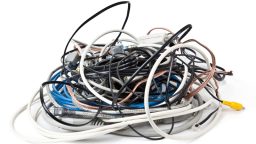Do you want to live a more environmentally friendly life? Making a few small changes is the best way to do so. You don’t have to drastically overhaul how you do everything in order to be kinder to Mother Earth. Instead, just follow the suggestions described here and pick a few that sound the best. It’s easier to make these changes a little at a time, so once your first few choices have become ingrained habits, it’s time to pick a few more. Before you know it, your lifestyle will be very environmentally friendly.
Stop Wasting Water and Using Disposable Water Bottles
Sit back and think about how much water you use every single day and then find easy solutions to the problem. Do you take baths? If so, gallons of excess water are going down the drain every single time. You can reduce your water usage and still maintain your expected cleanliness levels by switching to showers with a low flow showerhead. In addition to this, if you go through quite a few bottles of water each day, you can switch a much more environmentally friendly solution with a reusable water bottle and a water filter that’s attached to your faucet.
Use CFL (Compact Fluorescent) Bulbs
If you go into any home improvement store, you’ll find an entire aisle dedicated to light bulbs of all shapes and sizes. The one thing that you won’t find are those old fashioned “traditional” bulbs that use up a lot of electricity. Now is the best time to stock up, so when your last of those traditional bulbs finally burns out, you can replace it with a CFL bulb. These bulbs use less electricity and will last much longer, making them very environmentally friendly.
Related Article: 15 Things That Will Help You Conserve Your Home Energy
Skip the Paper Towels
Paper towels are handy. They clean up messes of all sizes and are very absorbent. The problem is that they’re bad for the environment. Think of how many paper towels you go through on a regular basis and then imagine how many are ending up in landfills. (The answer here is almost all of them.) Rather than fill your trash with used paper towels, switch to standard cloth towels. Microfiber ones are absorbent, don’t leave fibers behind, and can be washed and reused. Stock up on a bunch of them so that you have enough for a full load in the washing machine when they’re all dirty.
Purchase Secondhand Goods or Borrow Things When You Can
Have you heard of fast fashion? This clothing is designed for short-term use because it’s trendy and not made extremely well. With that said, it will hold up for quite some time when you treat it right. Rather than contribute to the environmental catastrophe that is fast fashion (think of how much pollution the manufacturing process creates), buy secondhand clothing. You also have the choice of purchasing clothing made in an environmentally friendly manner.
Now, for the second part of this – borrowing things. Think of what’s involved every time you place an order for a book. It needs to be packaged in cardboard and then shipped using trucks that run on fossil fuels. If you just borrow the book from the library, you’re not only money but also the planet.
Carry Canvas Grocery Bags
The states that have banned plastic grocery bags had the right idea. Those bags just end up in landfills, dumping grounds, or even waterways. They’re a hazard. Invest in a few good quality canvas grocery bags and use them instead when you go to the store. You can wash these bags and reuse them again and again.







